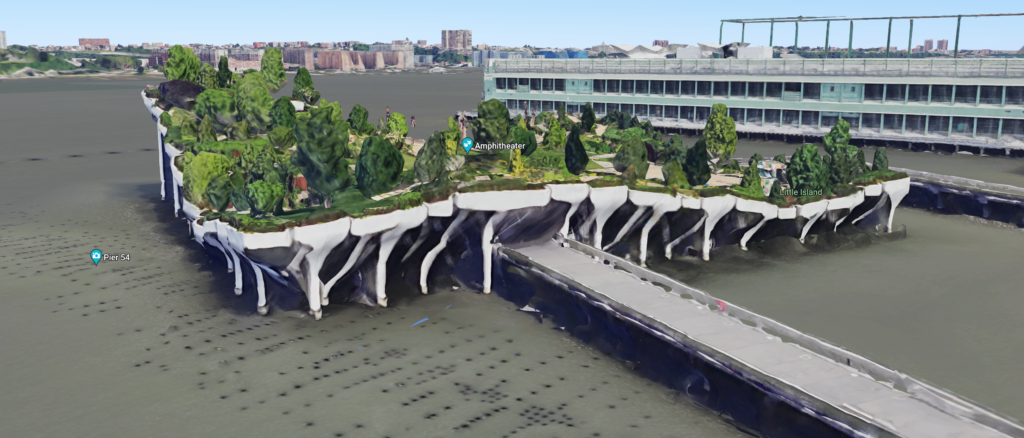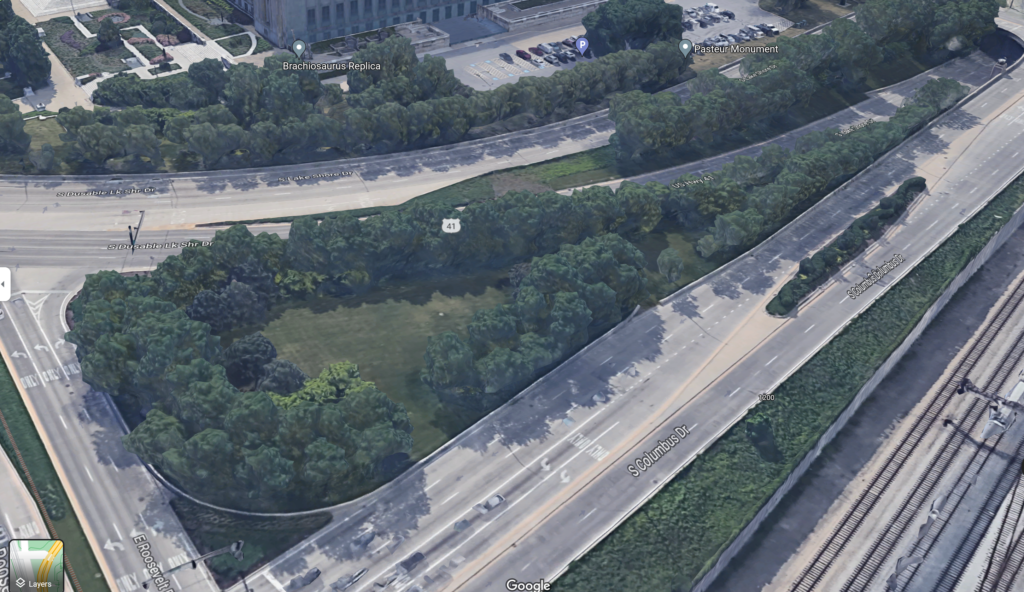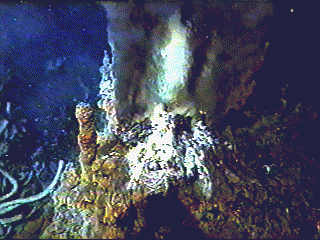“The girdle is often ornamented with spicules, bristles, hairy tufts, spikes, or snake-like scales.”
So close
“This idea is backed by research that finds that the psychological dimension
can be a first step in facilitating successful involvement, advocacy and
political action regarding environmental degradation. Providing a space
for environmental melancholia, a concept described by environmental
psychologist Renée Lertzman, could be relevant for the case of a retreating
glacier, because it describes ‘an arrested, inchoate form of mourning’ that
specifically addresses the experience of loss towards an object or environment.
Following in Elizabeth Meyer’s footsteps, the authors argue that
aesthetic experience could be landscape architecture’s key to address this
psychological dimension, because it has the capacity to shift human consciousness beyond inaction, and foster care to change behaviour.”
—Alexandra van Zyl & Rudi van Etteger, “Aesthetic Creation Theory applied: A tribute to a glacier”
In searching for the elusive core competency of landscape architecture, perhaps it is actually the preternatural ability to reject in every context—no matter how close it comes to your own conclusion—the idea that emotions might be an end rather than a means.
Monumental Fathoms
Is there anything that could have been done differently, better? Perhaps not; perhaps it was an impossible brief. Perhaps, despite the creeping intercontinental homogenization of high-quality landscape architecture, spreading the virtuous green of the global Picturesque to urban waterfronts and urban wetlands from Singapore to Santiago; despite the elevation of program, function, and development over any kind of appeal to individual experience; and despite the discipline’s collective decision that theory (of any kind) is about as relevant to the contemporary landscape as classical allegory, or watercoloring; despite all of these, perhaps the atavisitic need for our public landscapes to gesture, if weakly, at some connection to place, is still strong enough that a nature park on a square dock—without even a boat ramp or a wading pool—is just too ersatz to offer anything personal, anything other than cold spectacle.
But that can’t be true; it is not impossible, and the proof is that the little island does offer at least one authentic moment—one spot offering a singular connection to the place, a unique mediation with the environment not available anywhere else, maybe, in the world, hinting at an entire new relation between humans and water. In a little spur off of the path winding up to the “Observation Deck,” which offers the best view of the W Hotel Hoboken to be found, probably, in all of Manhattan, there is a spot where you can sit and look down over the water through the columns—under the island, so to speak. The remnants of the old forest of dock columns are clearly visible here, in a picturesque staggered file. The sunlight reflects off the water and plays over the smooth curves of the tulips; it feels like Venice. In the stark shadows the Rhino seams disappear and the concrete feels architectural, an authentic and artistic expression of structure rather than a superfice, as it does at the island’s grand entrance. For once, here, Heatherwick’s conceit evokes a gothic cathedral rather than the Rainforest Cafe.
In this spot I wanted desperately to be able to walk down under the tulips, closer to the water. There’s a metal gantry of some kind down there, suggesting some sort of unclear docking operation; but it’s not for the public. But its skeletal, forbidden presence—simply by existing—sabotages the rest of the island in its entirety. Because once the idea enters your mind, it is impossible to pluck out: they built the park upside down!
Maybe this is the answer to the impossible question of the little island’s future. Like the High Line itself (or the viaduct that prefigured it), maybe in a few decades after the park has been shut down due to a lack of maintenance and interest some renegade urbanists will set up a system of walkways in and around the columns. Maybe people will come there to fish or to dump evidence, or to swim, or to hide. I would come there to do some of those things; I don’t know if I will come to the top of the island again, unless I need to take pictures of the Field Operations project for some reason.

Elements of post-postindustrial style

Post-postindustrial
Unlike the new Moynihan Train Hall at Penn Station, itself like a grimly leveraged-bought-out doppelgänger of Grand Central, the Madison LIRR station actually does engage at the human scale—to an almost uncanny degree. (Anyone who honestly prefers the mall-like, benchless Moynihan Hall to either Penn Station or even the Port Authority has clearly never had to spend all that much time in any of them. It may be true that one scuttles into Penn Station like a rat; but a rat can live a life of great voluptuousness in New York).
Grand Central Madison oddly resembles—in its finishes, proportions, general emptiness, and weird corners and drop ceilings—a second-floor dentist’s office in a midsize, peri-urban commercial development (you know the type); the only outliers are the enormous columns that periodically transfix the space, their disproportionate wideness heightened by the low ceilings (themselves recalling the old Penn Station mall), which remind us just how much stuff we are buried under. The whole ensemble evokes the Zoomer creepypasta of the Backrooms, a collective postrationalization of barely-held childhood memories of institutional waiting rooms, and prefigures a kind of post-postindustrial ruin-aesthetic, not yet articulated but established here from Day One.

“I could not, despite its now evident rational structure, recognize anything designed but the human mind but saw it, rather, as the anatomical blueprint of some alien and crab-like creature”

“What I now saw before me was a low-built concrete mass, rounded at all its outer edges and giving the gruesome impression of something hunched and misshapen: the broad back of a monster . . . . I felt reluctant to pass through the black gateway to the fortress itself, and instead began by walking round it on the outside, through the unnaturally deep green, almost blue-tinged grass growing on the island. From whatever viewpoint I tried to form a picture of the complex I could make out no architectural plan, for its projections and indentations kept shifting, so far exceeding my comprehension that in the end I found myself unable to connect it with anything shaped by human civilization, or even with the silent relics of our prehistory and early history. And the longer I looked at it, the more often it forced me, as I felt, to lower my eyes, the less comprehensible it seemed to become.”
—W. G. Sebald, Austerlitz

The landscape without qualities consists of qualities without a landscape

“. . . and so he more or less had to believe that the personal qualities he had gained in this way belonged more to each other than to him, indeed that every one of them, when he examined it closely, was no more intimately bound up with him than with other people who might also happen to possess it.”
—Robert Musil, Der Mann ohne Eigenschaften
the performative ground

gravity and grass
As humanity enters a period of intimate engagement with death, and as landscape architects and planners reach for the mantle of green saviors, it is more important than ever that we remember the fundamental dialectic at the core of landscape architecture: between black and green, between death and growth.[1]
Adolf Loos wrote that the primordial act of architecture is the silent burial mound in the woods; but of course, this intervention is simply cut-and-fill—that is, it is strictly speaking an act of landscape architecture. It is likely that humans have been planting bodies for far longer than we have been planting seeds; even before Homo sapiens, older humans were caching their loved ones in the earth, first in caves, then in graves.[2] A 14,000-year-old Levantine graveyard saw humans buried with fresh flowers and fragrant herbs; the black-green dialectic has old roots.[3]
Killing remains at the heart of landscape architecture, though today we may be guilty of trying to hide it. Jacqueline Rose pointed out this ambiguity in analyzing the writing of Elena Ferrante: “It is, Ferrante explains, the deep-rooted mistake of every city to lay claim to be a city of love without labyrinths.” This is why Ferrante’s idol was Medea, the mother who murdered her own child. If we weren’t killers, then we wouldn’t be able to do our jobs; we’d just go hiking on the weekends like all the other nature-lovers. Instead, we destroy: we uproot, poison, girdle and burn, oil eggs and eradicate “invasives”; we stroll through nurseries picking winners and losers like Schutzhaftlagerführers or slave auctioneers. And we lament the bleeding-heart public who object to shooting deer and poisoning cats; our claim to expertise rests on this dialectical awareness that growing requires killing.
The landscape architect who most directly embraced this dialectic was Robert Smithson, who heaped scorn upon the “wishy-washy transcendentalism” that tempts us into admiring the meadow without appreciating the violence of the windstorm (or the steam shovel) that necessarily preceded it.[4] Of course, Smithson practiced what he preached by dying young in a fiery explosion. So too did Andrew Jackson Downing; and similarly Charles Eliot, though his inflammation worked from the inside out. How much consideration should we give to the violent early demises of these most revolutionary landscape theorists—especially at a moment when our discipline seems stagnant, firmly in the grasp of old ideas and even older designers? What is the ideal lifespan for a landscape architect?
Following the annihilation of Pompeii by an earthquake in 62 CE, Seneca asked: “What can ever seem safe enough, if the very earth is violently shaken and its most stable segments start sliding around? What refuge will our bodies escape to when anxious, if our fear springs from the inmost regions and is drawn up from the depths?”[5] The ground beneath humanity’s feet has never been less stable. After Nietzsche proclaimed God’s demise, he asked, desperately: “How shall we comfort ourselves, the murderers of all murderers? What festivals of atonement, what sacred games shall we have to invent?”[6] Scarcely a century later, we’ve surpassed that murder—for the idea of nature is far older than the idea of God. Consequently, our festivals of atonement must be all the more profound. As humanity prepares to mourn the paradisal Holocene, landscape architects—the original undertakers—must lead the burial procession.
[1] That bleakest mystic, Simone Weil, identified the embodiment of this dialectic in plants themselves, which are rooted in the mundane darkness of the Earth but feed on the celestial spirit of the Sun. Simone Weil, Gravity and Grace, New York: Putnam, 1952.
[2] Paul Pettitt, “When Burial Begins,” British Archaeology, 66 (August 2002).
[3] Dani Nadel et al., “Floral lining from burials at Raqefet Cave,” Proceedings of the National Academy of Sciences, vol. 110, no. 29 (July 2013), 11774–11778.
[4] Robert Smithson, “Frederick Law Olmsted and the Dialectical Landscape,” Artforum, vol. 11, no. 6 (1973).
[5] Seneca, Naturales quaestiones, Book VI: On earthquakes, Chicago: The University of Chicago Press, 2010.
[6] Friedrich Nietzsche, The Gay Science: With a Prelude in Rhymes and an Appendix of Songs, trans. Walter Kaufmann, New York: Vintage, 1974.
the landscape

